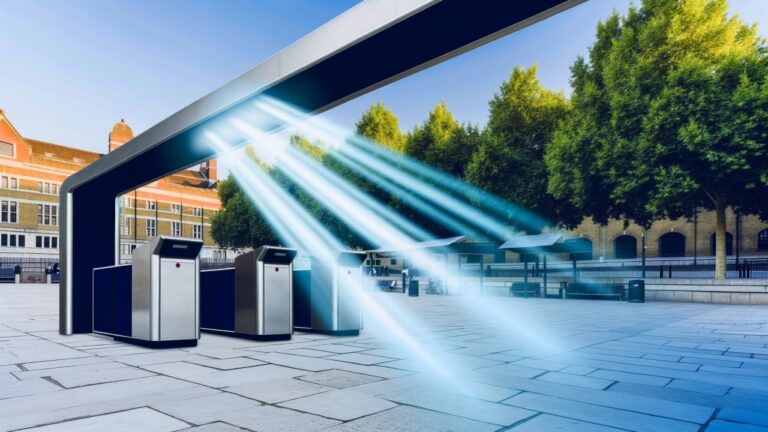Public safety has become a paramount concern for governments and organizations worldwide. The rise in security threats, from terrorism to smuggling and other criminal activities, has necessitated the development of more sophisticated security measures. One of the key technologies in ensuring safety in public spaces is the security x-ray machine. These devices have evolved significantly over the years, offering enhanced capabilities that not only detect threats but also streamline the security process.
Evolution of X-Ray Technology
The journey of x-ray technology began over a century ago, and since then, it has undergone remarkable transformations. Initially used in medical settings, x-ray technology found its way into security applications during the late 20th century. Early x-ray machines were bulky, offered limited capabilities, and required significant operator training. However, advancements in sensor technology, software algorithms, and imaging techniques have led to the development of compact, user-friendly, and highly effective security x-ray machines.
Modern security x-ray machines now feature high-resolution imaging, allowing operators to detect even the smallest of threats hidden within bags and packages. Advanced software algorithms can analyze images in real-time, highlighting potential threats and reducing the need for manual inspections. This evolution has made security checks quicker and more efficient, ultimately enhancing safety in public spaces.
Integration of Artificial Intelligence
One of the most significant advancements in security x-ray machine technology is the integration of artificial intelligence (AI). With the ability to analyze vast amounts of data quickly, AI algorithms can improve threat detection accuracy. By learning from previous data and continuously evolving, these systems can identify anomalies, recognize patterns, and distinguish between benign items and potential threats.
For instance, AI-enabled security x-ray machines can differentiate between a harmless electronic device and a weapon by analyzing the size, shape, and density of objects. This capability not only streamlines the security process but also reduces the chances of false alarms, allowing security personnel to focus on genuine threats.
Automated Threat Detection
In addition to AI, automated threat detection systems have become integral components of modern security x-ray machines. Traditional security screenings often relied on human operators to identify potential threats, which could lead to inconsistencies and fatigue-related errors. Automated systems, however, provide a more reliable and efficient alternative.
These systems utilize machine learning models that have been trained on vast datasets of various objects, allowing them to recognize potential threats automatically. By significantly reducing the reliance on human judgment, automated threat detection enhances the overall security process, making it faster and more accurate. This is particularly important in high-traffic areas such as airports, train stations, and large public events where quick and reliable security screening is essential.
Enhanced 3D Imaging Capabilities
Another advancement in security x-ray machine technology is the introduction of enhanced 3D imaging capabilities. Traditional x-ray machines typically provide a 2D view of the scanned items, which can make it challenging for operators to identify concealed threats. However, modern security x-ray machines equipped with 3D imaging technology offer a more comprehensive view, allowing operators to manipulate and rotate images to detect hidden items more effectively.
3D imaging not only improves threat detection but also enhances the overall security experience for the public. By providing clearer and more detailed images, operators can make informed decisions quickly, reducing wait times and improving the flow of people in busy environments. This technology also aids in the training of security personnel, as they can familiarize themselves with various scenarios and improve their decision-making skills in real time.
Collaboration with Other Security Technologies
The advancements in security x-ray machine technology do not exist in isolation; rather, they are often integrated with other security systems to create a more comprehensive approach to safety. Collaboration with technologies such as biometric scanning, facial recognition, and advanced surveillance systems creates a multi-layered security framework that enhances overall safety in public spaces.
For example, combining x-ray screening with biometric identification helps ensure that only authorized individuals have access to restricted areas. This integrated approach not only increases the efficiency of security operations but also enhances public trust in the safety measures in place.
Adapting to New Threats
As security threats continue to evolve, so too must the technology used to counter them. Modern security x-ray machines are designed with adaptability in mind, allowing for software updates and enhancements that keep pace with emerging threats. This adaptability is crucial as criminals and terrorists continuously seek new methods to bypass security measures.
For instance, the recent rise in the use of drones and improvised explosive devices (IEDs) has prompted the development of specialized x-ray machines capable of detecting these specific threats. By staying ahead of the curve, security x-ray machine technology ensures that public spaces remain safe and secure.
Regulatory Standards and Compliance
As security x-ray technology continues to advance, it is essential to adhere to regulatory standards and compliance guidelines. Organizations and agencies are increasingly required to meet stringent security protocols, necessitating the use of certified equipment. This ensures that the security x-ray machines in operation are effective and reliable, providing peace of mind to the public.
Compliance with international standards not only enhances the safety of public spaces but also fosters confidence among travelers and citizens. When individuals feel secure in their environment, they are more likely to engage in public activities, ultimately benefiting local economies and communities.
In summary, advancements in security x-ray machine technology play a crucial role in enhancing safety in public spaces. Through the integration of artificial intelligence, automated threat detection, enhanced imaging capabilities, collaboration with other security systems, and adaptability to new threats, these machines have transformed the way security is managed. By investing in and adopting these technologies, organizations can create safer environments for everyone, fostering a sense of security and trust in public spaces.

